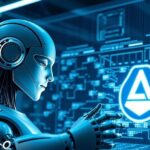
Alloy Data Management Revolutionizes Robotics
Alloy Data Management Revolutionizes Robotics Alloy is stepping into the robotics industry aiming to transform how robotics companies handle their data. By providing specialized tools...


Alloy Data Management Revolutionizes Robotics Alloy is stepping into the robotics industry aiming to transform how robotics companies handle their data. By providing specialized tools...

Revolutionizing Research with Huxe Audio-Powered Insights The team behind Google’s NotebookLM is back with a new venture! Meet Huxe an innovative app that uses audio...

European Airports Still Grappling with Aftermath of Cyberattack Several European airports are still experiencing disruptions following a recent ransomware attack. The incident which occurred several...

Google Play Store Gets AI Boost and Redesign Google recently unveiled a revamped Play Store integrating new AI features and a redesigned user interface. These...

Unity’s 2025 Push Live Social Layers and In-Game Chat Redefining Player Interaction The gaming industry has always been about more than graphics or gameplay mechanics...

Goodnotes Targets Professionals with Collaborative Docs and AI Assistant Goodnotes is stepping up its game to attract professional users by introducing collaborative documents and an...
Sila Opens U.S. Factory for Energy-Dense EV Batteries Sila, a battery materials company, has opened a new manufacturing facility in the United States to produce...